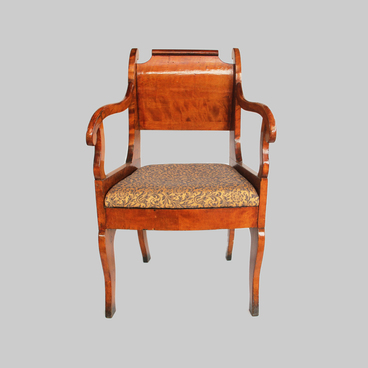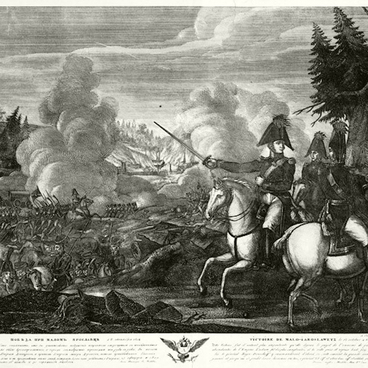In the 19th century, the blotter was an indispensable desktop item. The very name ‘blotter’ comes from the French word ‘bouvard’, which speaks to the process of soaking up excess ink. Designed for business people, this elegant piece dates back to the mid-19th century, after the invention of special ink blotting paper. An elegant folder contained a notebook with sheets of blotting paper to prevent ink from smearing the paper, and a small amount of letter or writing paper, envelopes, correspondence, and other important papers. Blotters or leather folders were skillfully decorated with embroidery, various inscriptions, and inlays. Such decorations emphasized the special status of its owner and the office where they were kept.
The Siberian provincial city of Yalutorovsk saw 20 years of the life of exiled Decembrist, nobleman, hero of the Patriotic War of 1812, retired lieutenant colonel Matvey Ivanovich Muravyov-Apostol. According to the recollections of his contemporaries, he lived in an elite part of the city, in a very well furnished house. Three rooms in the house today are memorial: the hall, the study and the living room. Valuable information is also provided by the memoirs of the writer and artist Mikhail Znamensky, the study ‘had shelves of books, portraits of relatives lined the walls, including a large portrait of Napoleon, guns with hunting accessories…’. There was always order in the office and every object spoke of the high artistic taste of its owner. This old blotter found it’s place here as well. It is rectangular, made of thick cardboard, pasted over with brown paper. It has a curved valve with a metal lock. The valve and spine are covered with light brown leather. On both sides, along the edge there is a curved frame in the form of an embossed golden ornament of floral and geometric look. On the reverse side you can see an insert made of paper canvas with blue, brown, green and gray bead and thread embroidery. The embroidery ornament consists of plant elements. Inside the case there are two pockets pasted over with blue paper outside and pink paper inside.
The exhibit displayed here was acquired during a scientific trip to the city of Moscow in the antique department of the Moscow bookstore for a new exhibit in the house of Matvey Muravyov-Apostol, which opened after it’s restoration in 1994.
The Siberian provincial city of Yalutorovsk saw 20 years of the life of exiled Decembrist, nobleman, hero of the Patriotic War of 1812, retired lieutenant colonel Matvey Ivanovich Muravyov-Apostol. According to the recollections of his contemporaries, he lived in an elite part of the city, in a very well furnished house. Three rooms in the house today are memorial: the hall, the study and the living room. Valuable information is also provided by the memoirs of the writer and artist Mikhail Znamensky, the study ‘had shelves of books, portraits of relatives lined the walls, including a large portrait of Napoleon, guns with hunting accessories…’. There was always order in the office and every object spoke of the high artistic taste of its owner. This old blotter found it’s place here as well. It is rectangular, made of thick cardboard, pasted over with brown paper. It has a curved valve with a metal lock. The valve and spine are covered with light brown leather. On both sides, along the edge there is a curved frame in the form of an embossed golden ornament of floral and geometric look. On the reverse side you can see an insert made of paper canvas with blue, brown, green and gray bead and thread embroidery. The embroidery ornament consists of plant elements. Inside the case there are two pockets pasted over with blue paper outside and pink paper inside.
The exhibit displayed here was acquired during a scientific trip to the city of Moscow in the antique department of the Moscow bookstore for a new exhibit in the house of Matvey Muravyov-Apostol, which opened after it’s restoration in 1994.



